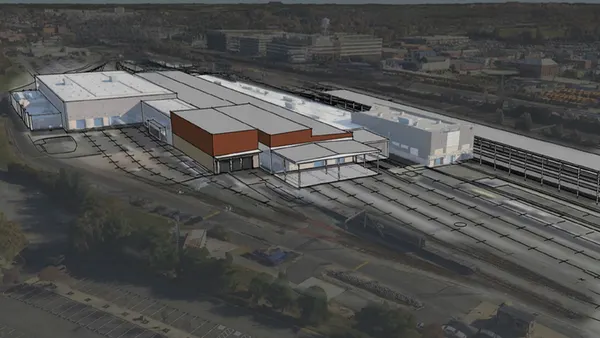Dive Brief:
- Borough of Queens President Melinda Katz has called on Amazon to help fund the proposed Brooklyn-Queens Connector (BQX) streetcar, saying that it would be a “fair investment” into its new second headquarters and that the “company and the public sector must work together to make investments in necessary transit improvements that will support Queens residents.”
- BQX, originally proposed by New York City Mayor Bill de Blasio, is a zero-emission streetcar that would run along 11 miles of waterfront between Astoria and Red Hook and stop in 11 areas, reported AmNY.com. It also would link to 13 subway routes, more than 30 bus lines and nine ferry landings. Up to 400,000 residents along the waterfront could benefit from the direct connection between Brooklyn and Queens, as the only public transit options now necessitate passing through Manhattan.
- The proposal in its current form could see completion in 2029, but the city has to conduct an environmental impact review before the proposal is approved. It will cost about $2.7 billion, half of which will be paid for by increasing tax revenues and rising property tax values along the route, with the federal government picking up the other half, the New York Economic Development Corp. discovered.
Dive Insight:
Amazon’s recent announcement to split its second headquarters, or HQ2, between New York and Northern Virginia quite literally has the power to redefine the areas. For example, it rebranded the stretch between the Virginia towns of Arlington and Alexandria in which it will take up residence as National Landing.
Both cities are preparing for the population influx sure to come from the estimated 25,000 high-paying jobs Amazon said it will create in each location. The Commonwealth of Virginia has pledged to invest $195 million into its infrastructure, including improvements to Metro stations, a pedestrian bridge attaching National Landing and Reagan National Airport and work to improve pedestrian experiences crossing Route 1 over the next 10 years.
During the planning process, New York residents provided input for community infrastructure improvements, which New York City will fund through a Payment In Lieu Of Tax program, which is based on Amazon’s property taxes on a portion of the development site.
Although Amazon’s arrival will be a boon to New York and Virginia in many ways, there are drawbacks to being the home of such a large corporation. Just ask Seattle. Despite Amazon having added $38 billion to the city’s economy between 2010 and 2016, the city’s rapid and ongoing population growth have made commute times longer and have rocketed land and housing costs. Seattle has even come under fire for losing some of its diversity and culture. Once considered a hub for outdoor enthusiasts, that image has largely been replaced with the image of high-salaried tech workers that now populate much of the area.













